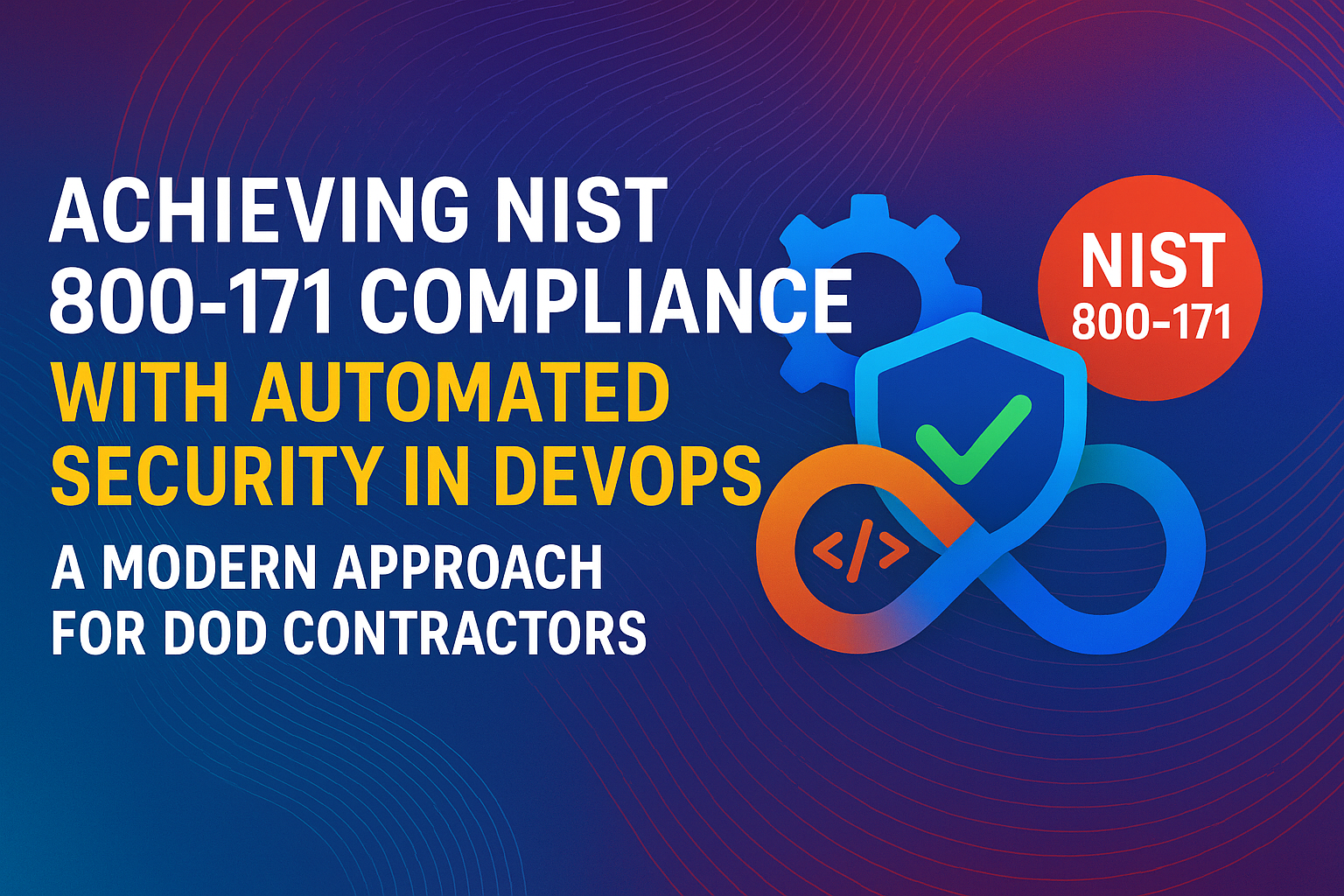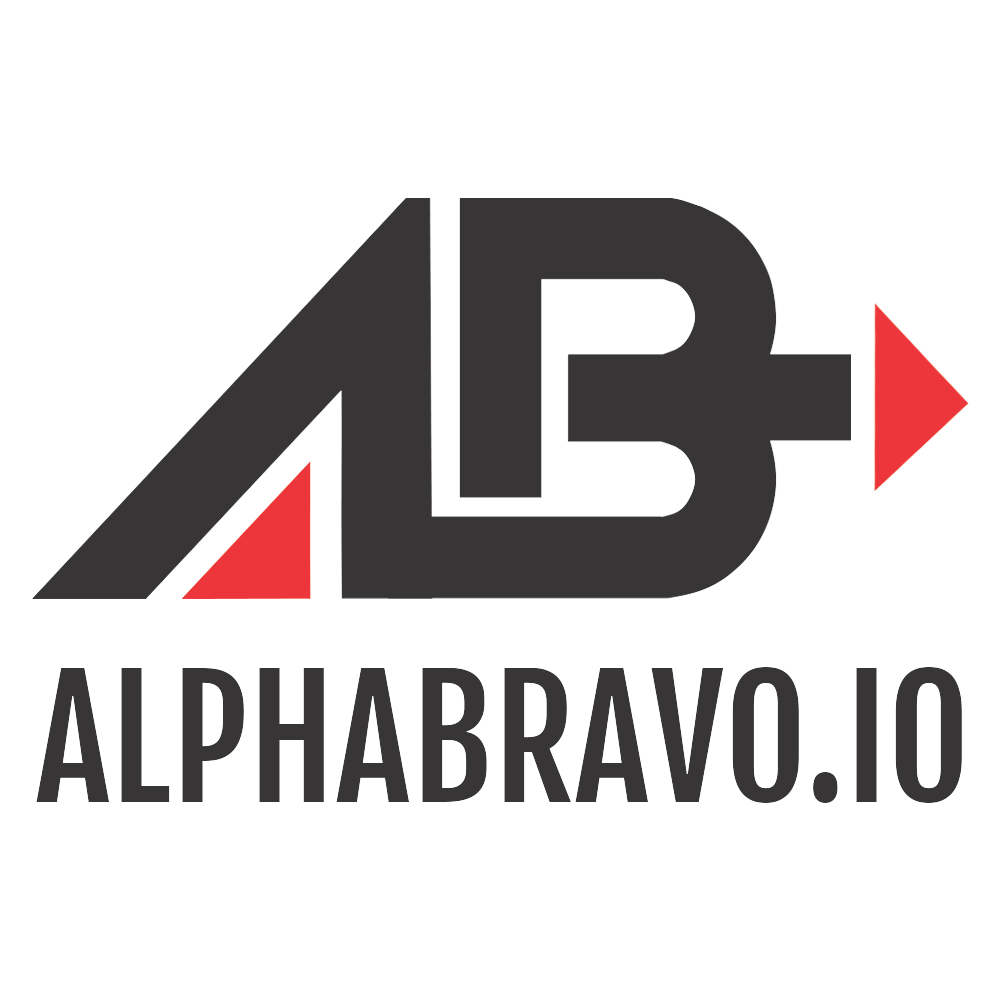Achieving NIST 800-171 Compliance with Automated Security in DevOps: A Modern Approach for DoD Contractors
Secure, Comply, Deploy: Automating NIST 800-171 for DoD DevOps Success

Picture this: Your talented engineering team is cranking out innovative solutions for your latest DoD contract, coffee cups perpetually full, keyboards clacking away at midnight. Then someone whispers those dreadful words: "NIST 800-171 compliance audit." Suddenly, the coding paradise transforms into a frantic documentation scramble that feels like trying to organize a tornado.
If this scenario sends shivers down your spine, you're not alone. As of April 2025, thousands of defense contractors across the United States are navigating the complex waters of cybersecurity compliance, particularly NIST Special Publication 800-171, which has become the gold standard for protecting Controlled Unclassified Information (CUI) in non-federal systems.
Understanding NIST 800-171 and Why Your DoD Contracts Depend On It
For the uninitiated, NIST 800-171 isn't just another alphabet soup regulation that government contractors can gloss over. It's the cybersecurity framework that determines whether you can handle Controlled Unclassified Information (CUI) – and by extension, whether you can win lucrative DoD contracts.
According to the National Archives and Records Administration, CUI is defined as "information the Government creates or possesses, or that an entity creates or possesses for or on behalf of the Government, that requires safeguarding or dissemination controls". Think of it as information that isn't classified enough to require a security clearance, but is sensitive enough that you wouldn't want it displayed on a Times Square billboard.
Examples include intellectual property related to defense systems, health information, critical infrastructure details, and technical information that could give adversaries an edge if compromised. In recent years, this information "has been a target of state-level espionage," as NIST Fellow Ron Ross pointed out in a recent update to the guidelines.
The 14 Control Families: Your Cybersecurity Family Reunion
NIST 800-171 organizes its requirements into 14 control families, each addressing different aspects of cybersecurity. If these control families were relatives at your family reunion, here's who they'd be:
- Access Control - The cautious grandparent who wants to know exactly who's coming and going at all times
- Awareness and Training - The aunt who insists everyone knows the family emergency plan
- Audit and Accountability - The uncle who keeps detailed records of who ate the last cookie
- Configuration Management - The cousin who organizes the pantry and labels everything
- Identification and Authentication - The security-conscious sibling who checks IDs at the door
- Incident Response - The level-headed relative who knows exactly what to do when something goes wrong
- Maintenance - The handy family member who keeps everything running smoothly
- Media Protection - The parent who puts locks on the family photo albums
- Personnel Security - The relative who runs background checks on new significant others
- Physical Protection - The property guardian who installs fences and security systems
- Risk Assessment - The worrier who plans for every possible disaster
- Security Assessment - The perfectionist who double-checks everyone else's work
- System and Communications Protection - The tech-savvy member who encrypts family text messages
- System and Information Integrity - The detail-oriented relation who notices when anything is out of place
Collectively, these 14 control families encompass 110 specific security requirements that DoD contractors must implement to safeguard CUI effectively. The latest revision of NIST 800-171 (Revision 3) was published in May 2024, continuing to evolve the requirements to address emerging threats.
The Compliance Challenge: More Than Just Checking Boxes
Let's be honest – managing 110 security requirements across 14 different control families isn't anyone's idea of a good time. It's like trying to solve a Rubik's Cube while riding a unicycle on a tightrope. One misstep, and down you go.
For many smaller defense contractors, the challenge is particularly acute. As the DoD explicitly states, they're "more than willing to outsource innovation, ideas, and services" to small and mid-sized businesses – provided they can "effectively safeguard sensitive government information from potential threats". The message is clear: no compliance, no contract.
The challenge is further complicated by the fact that NIST 800-171 compliance is now part of the Cybersecurity Maturity Model Certification (CMMC) program, which formally launched on October 15, 2024, and went into effect on December 16, 2024. Under this program:
- Level 1 is designed to verify 15 requirements aligned with FAR 52.204-21
- Level 2 verifies all 110 NIST SP 800-171 r2 requirements
- Level 3 adds an additional 24 NIST SP 800-172 requirements for higher-level protection
With the 48 CFR part 204 CMMC Acquisition rule anticipated to update DFARS 252.204-7021, contractors will soon be required to "achieve and maintain the required level of CMMC certification for the duration of the contract". This is no longer a one-time certification but an ongoing commitment to cybersecurity excellence.
Enter DevOps: When Speed Meets Security Requirements
Traditional security approaches often treat compliance as a separate, final checkpoint before deployment – the cybersecurity equivalent of remembering you need milk after you've already returned from the grocery store. This leads to delays, friction between teams, and the infamous "security as a bottleneck" complaint.
Enter DevOps – the methodology that brings development and operations together in beautiful harmony. But for DoD contractors, we need to take it a step further with DevSecOps, integrating security throughout the development lifecycle.
As NIST SP 800-204C explains, DevSecOps provides "faster deployment and updates while integrating security throughout the life cycle". This is particularly important for cloud-native applications with microservices architecture, where the entire set of source code can be divided into five types:
- Application code
- Application services code
- Infrastructure as code
- Policy as code
- Observability as code
Each of these code types needs security controls that align with NIST 800-171 requirements, creating a complex matrix of compliance needs. Manual tracking of these requirements across multiple code bases and deployment environments would be like trying to count raindrops in a thunderstorm – technically possible but practically infeasible.
Automated Security: Your NIST 800-171 Compliance Co-Pilot
This is where automated security tools become not just useful but essential. Think of automated security as having a compliance co-pilot – it doesn't replace the need for skilled professionals, but it certainly makes their job more manageable and reduces the likelihood of human error.
For example, one DoD contractor facing NIST 800-171 compliance requirements implemented Aqua Security's tfsec, a static analysis security scanner for Terraform Infrastructure as Code (IaC). This solution automatically identifies non-compliance issues before code is deployed to production, allowing developers to fix problems early in the development cycle.
Here's how automated security tools can address specific NIST 800-171 control families:
Access Control Automation
Tools can continuously monitor user accounts, automatically disable accounts after predefined periods of inactivity (as required by control 3.1.1.f.2), and enforce least privilege principles (3.1.5).
Configuration Management Automation
Security scanners can check infrastructure code against secure configuration benchmarks based on industry standards like CIS and DISA STIG, automatically flagging deviations from secure baselines.
Audit and Accountability Automation
Automated logging and monitoring solutions can track user authentications and administrative activity across local, domain, and cloud services, creating a comprehensive audit trail that satisfies multiple NIST 800-171 requirements.
Vulnerability Scanning Automation
Regular automated vulnerability scanning (both internal and external) helps satisfy requirements for identifying and addressing system flaws.
The beauty of automation isn't just in checking boxes but in creating a continuous compliance posture. As one contractor discovered, implementing automation allowed them to achieve 95% compliance with NIST 800-171 requirements across specific AWS accounts, significantly reducing the manual effort required.
From Theory to Practice: Automation Success Stories
Let's look at how some organizations have successfully implemented automated security for NIST 800-171 compliance:
Case Study: The 200-Control Challenge
One client needed to implement NIST 800-171 across specific AWS accounts to meet requirements for government contracts. They set an ambitious deadline to achieve 95% compliance using third-party security scanning and auto-remediation tools. The challenge was significant – adding 200 new controls to their existing tiered security solution.
By implementing a static analysis security scanner that identifies non-compliant code in Terraform prior to deployment, the organization created a proactive compliance approach. Developers received immediate feedback on compliance issues before code reached production, dramatically reducing remediation time and costs.
Case Example: Continuous Monitoring for DFARS Compliance
Another organization leveraged automated security tools to address the DFARS 252.204-7012 clause, which requires contractors to implement NIST 800-171 to protect Controlled Defense Information (CDI). Their approach included:
- Quarterly automated vulnerability scanning of internal and external environments
- Automatic detection and scanning of new devices as they enter the network
- Continuous monitoring of applications for changes
- Automated tracking of user authentications and administrative activity
The result was not just compliance but a stronger overall security posture that improved their competitiveness for DoD contracts.
Best Practices for Automated NIST 800-171 Compliance
Based on successful implementations and official guidance, here are some best practices for using automation to achieve and maintain NIST 800-171 compliance:
1. Start with a Solid Understanding of Your CUI
Before implementing automation, clearly identify where CUI resides in your systems. As the DoD guidance explains, covered defense information is "unclassified controlled technical information (CTI) or other information as described in the CUI Registry that requires safeguarding/dissemination controls". You can't protect what you can't identify.
2. Map Controls to Automated Tests
Create a comprehensive mapping between NIST 800-171 controls and specific automated tests or checks. For example, control 3.1.7 (preventing non-privileged users from executing privileged functions) can be verified through automated privilege escalation testing.
3. Integrate Security Automation Throughout the DevOps Pipeline
Implement security scanning at multiple stages:
- Pre-commit hooks for basic security checks
- Build-time scanning for more comprehensive analysis
- Deployment-time verification for environment-specific requirements
- Runtime monitoring for ongoing compliance
4. Leverage Infrastructure as Code (IaC) Security Scanning
Tools that scan IaC templates (like Terraform, CloudFormation, or Kubernetes manifests) can identify compliance issues before infrastructure is even deployed, shifting security even further left.
5. Implement Automated Remediation Where Appropriate
Some compliance issues can be automatically remediated without human intervention. For example, enforcing password complexity requirements or revoking excessive permissions can often be automated safely.
6. Maintain Comprehensive Evidence Collection
Automated tools should generate and store evidence of compliance that can be presented during audits. According to NIST SP 800-171, "There is no prescribed format or specified level of detail for system security plans. However, organizations ensure that the required information in 3.12.4 is conveyed in those plans".
7. Train Teams on Both Security Requirements and Automation Tools
Automation is only effective when teams understand both the security requirements and how to respond to issues flagged by automated tools. Regular training sessions should cover both aspects.
Looking Forward: CMMC and the Evolving Compliance Landscape
The compliance landscape for DoD contractors continues to evolve, with the Cybersecurity Maturity Model Certification (CMMC) program representing the next major milestone. As of December 16, 2024, the 32 CFR part 170 CMMC Program rule is in effect, and the 48 CFR part 204 CMMC Acquisition rule is anticipated to update DFARS requirements soon.
This evolution means contractors need to think beyond point-in-time compliance and embrace a continuous compliance approach. Automated security tools will become even more essential as:
- CMMC Level 2 verification of all 110 NIST SP 800-171 requirements becomes mandatory for handling CUI
- Contractors must maintain certification "for the duration of the contract"
- The Department of Defense continues to define organization-defined parameters (ODPs) for NIST SP 800-171 Revision 3
The April 10, 2025 DoD memorandum on "Organization-Defined Parameters for National Institute of Standards and Technology Special Publication 800-171 Revision 3" demonstrates the department's ongoing commitment to refining specific parameters for security controls. These parameters were developed through collaboration with "DoD offices, external government agencies, and subject matter experts from University-Affiliated Research Centers and Federally Funded Research and Development Centers", with additional input from industry stakeholders.
For contractors, this means compliance automation needs to be adaptable to evolving requirements. Systems should be designed with flexibility in mind, allowing for parameter adjustments as DoD guidance changes.
Final Thoughts: Where Compliance Meets Innovation
The path to NIST 800-171 compliance doesn't have to be paved with frustration and manual processes. By embracing DevSecOps principles and implementing automated security tools, DoD contractors can transform compliance from a burdensome checkbox exercise into a competitive advantage.
In the words of NIST Fellow Ron Ross, "We want to implement and maintain state-of-the-practice defenses because the threat space is changing constantly". Automated security tools provide exactly this capability – continuous assessment against evolving threats and requirements.
The DoD's message to contractors is clear: "You don't need to be a large enterprise to win federal contracts-what matters is proving that you can effectively safeguard sensitive government information from potential threats". Automated security helps level the playing field, allowing smaller contractors to demonstrate the same level of cybersecurity rigor as their larger competitors.
As you embark on or continue your NIST 800-171 compliance journey, remember that automation isn't just about efficiency – it's about creating a sustainable, repeatable approach to security that can adapt to changing requirements and threats. In the dynamic world of defense contracting, that adaptability may be your most valuable asset.
After all, in the cyber battlefield of defense contracting, the contractors who automate today will be the ones winning the contracts of tomorrow.

